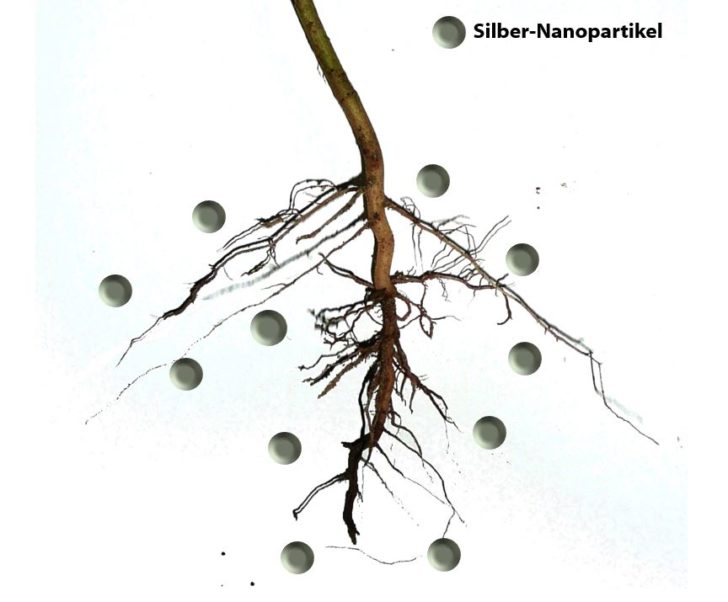Das komplexe Zusammenspiel von Nanosilber und Weizenwurzel

Wissenschaftler nehmen an, dass Silbernanopartikel (Ag-NPs) als „Trojanische Pferde“ auftreten, in dem sie in lebende Organismen eintreten und im Laufe der Zeit Silber-Kationen (Ag+) freigeben, welche eine toxische Wirkung haben. Dies wurde bis vor kurzem als der Mechanismus angesehen, durch den Ag2S-NP (Silbersulfid-Nanopartikel) giftig für Weizen und Augenbohnen sein könnten. Eine neue Untersuchung von einem Team von französischen Wissenschaftlern hat Beweise für ein komplexeres Schema gefunden - obwohl das Trojanische-Pferd-Szenario sehr wahrscheinlich stattfindet. Dabei wurden unterschiedliche Reaktionen der Pflanze in Abhängigkeit von den am Anfang eingesetzten Silber Formen festgestellt.
The distribution of silverspecies probably evolves over time, leading to a complex exposition pattern for plants, also exposed to HS- in the case of Ag2S-NPs.
The authors write that these conflicting results usually seen in the literature concerning the toxicity of silver nanoparticles are generally ascribed to differences in exposure conditions, structural properties of nanoparticles, and plant species. This evolving silver speciation may represent an additional source of variability and conflicting results.
Data from this study showed drastic different responses of the plant depending upon the starting nanoparticles, high-lighting the importance to include transformed nanoparticles in ecotoxicological studies.
Although the uptake and translocation of silver was lower for the Ag2S-NPs exposure compared to the Ag-NP exposure, phytotoxicity symptoms were observed.
According to the research team, these results show that the sulfidation of Ag-NPs is not a perfect antidote to toxicity and that Ag2S-NPs are not as stable as expected when exposed to plant roots.
In agricultural soils, the rhizospheric activity of plants might partly dissolve Ag2S, causing some impacts on crop quality and yield and, more generally, on ecological services.
Quelle: nanowerk
Bildquelle: wikimedia commons